Safari keeps getting better and better on the iPhone, and that's exactly what happened with the latest Safari 16 update for iOS.
There are new web extension APIs for developers to make even more kinds of Safari extensions, as well as support for new web technologies that give developers the ability to make webpages look and feel better. But those of just the developer-facing new features — there's much more to be excited about.
Tab Groups is one feature that got a lot of love in the Safari update, but there's also an innovative approach to passwords that improves security, many different syncing options, productivity upgrades, and helpful tools to interact with online images. There are even a few hidden surprises. To get the Safari 16 update, you need to be running iOS 16 or iPadOS 16 on your iPhone or iPad.
1. Collaborate in Tab Groups
Tab groups, introduced in iOS 15, make it incredibly easy to stay organized in Safari. You can keep all your work-related browsing in a "Work" group or all of your vacation ideas in a "Vacations" collection. Now, you can collaborate with others in any tab group you share with them or they share with you.
You can share groups in numerous ways. When in the current group you want to share, either tap the tabs icon, tap the group name at the top, or swipe the search bar up if it's at the bottom. Then, tap the share button at the top next to the group name. If you don't see it, swipe down on the tabs view to unhide it. You can also share a group by tapping the group's name at the bottom of the tabs view, long-pressing the group's name, and tapping "Share."
At the moment, you can only invite collaborators via Messages. Everyone can add their own tabs and instantly see other group members' actions.

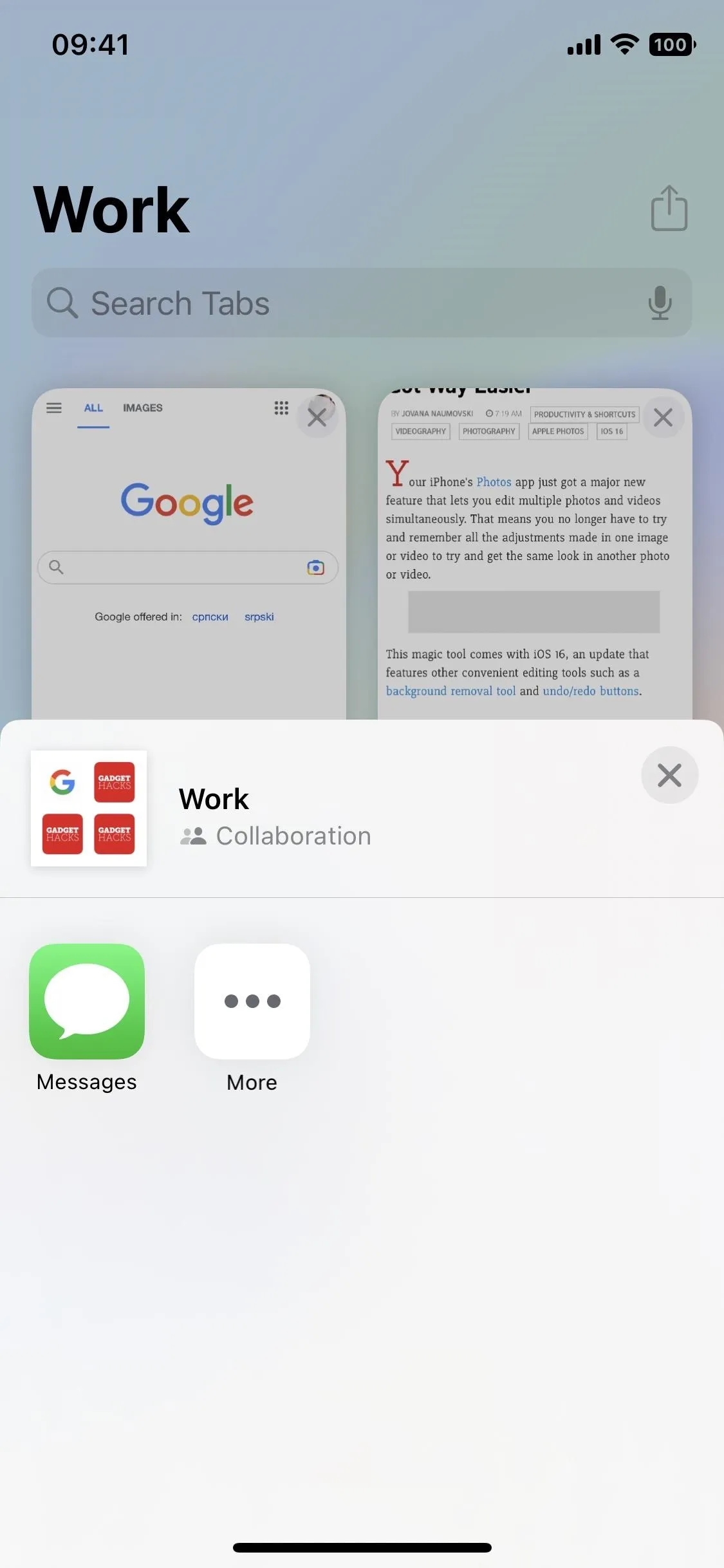


2. Pin Tabs in Tab Groups
Speaking of tab groups, you can now also pin the tabs you need most often to the top of the group. Open the group's tabs view, long-press the tab you want to pin, and tap "Pin Tab" to move it above all the other tabs. Alternatively, you can long-press the tab you want to pin, then drag and drop it among the other pinned tabs, but it only works if you have at least one pinned tab already.
To reorganize your pinned tabs, long-press on one, then drag and drop it on the spot you want.
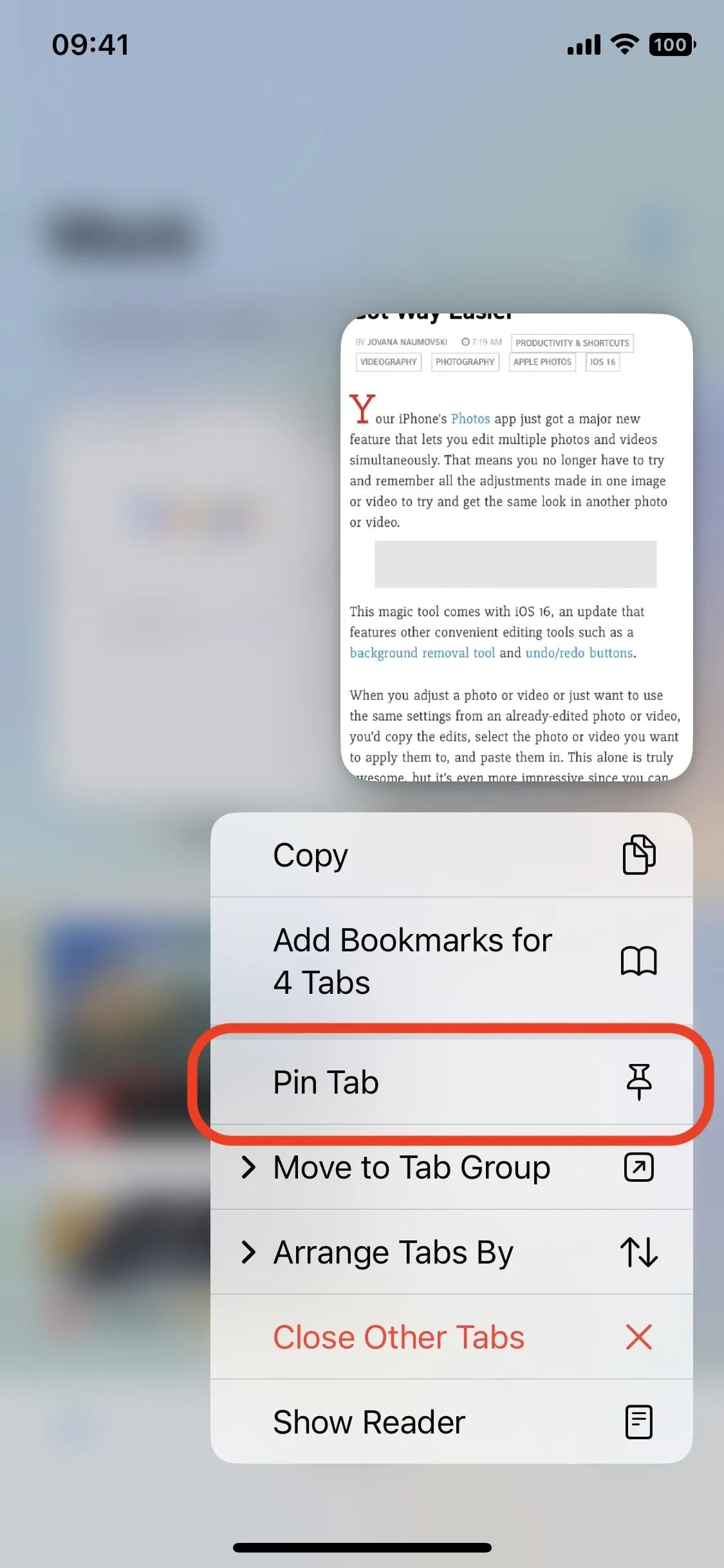
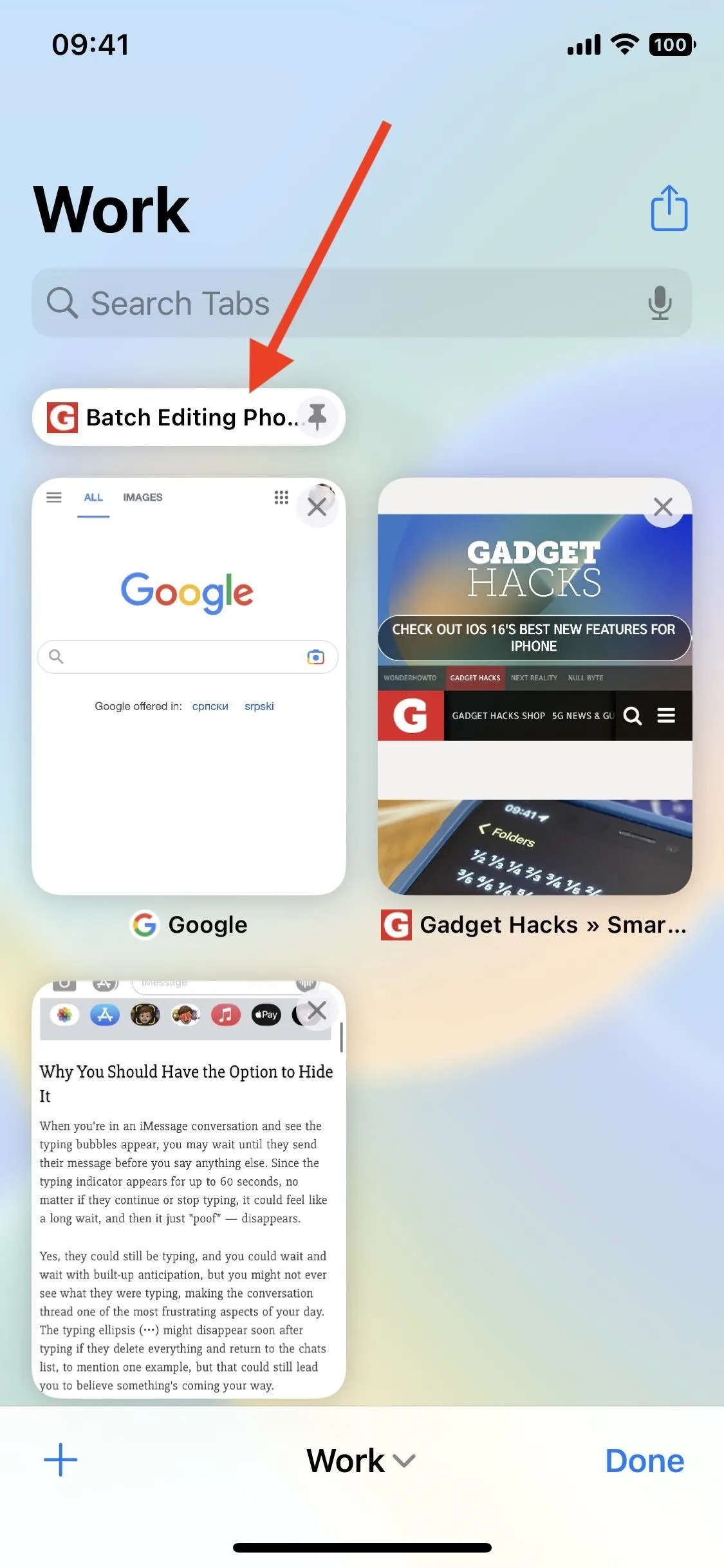
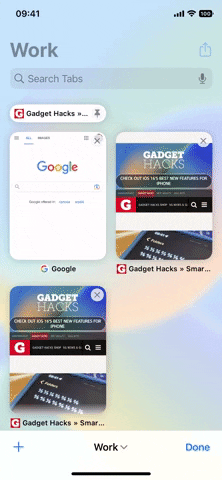



3. Add Favorites to Each Tab Group's Start Page
When you open up a new tab in a tab group, you'll see the start page and a new section at the top to place favorited webpages just for that group. Tap the plus (+) there, and you can choose to add any of your current favorites from your main favorites list or another group's favorites list. You can also add an entirely new favorite just for that group by opening the share sheet on the webpage and choosing "Add to [Group Name] Favorites."
4. See Recently Closed Tabs for Each Tab Group
When you long-press the plus (+) icon in a group's tabs view, you can see all of the recently deleted tabs from across all your groups. But now, you can see just those closed from the group you're currently in from the start page, right under the new group favorites.
5. Set Custom Backgrounds for Each Tab Group
When you're on the start page in any group, you can scroll to the bottom and tap "Edit" to view customization options. If you don't see the new group favorites or recently closed tabs sections, you can enable them from here. At the bottom, you can pick a wallpaper or choose a custom one, and it will now apply just to the group you're in, so you can have a different background for each tab group.
All the other options listed are not per-group settings, so changing things like iCloud Tabs and Frequently Visited will affect things Safari-wide.
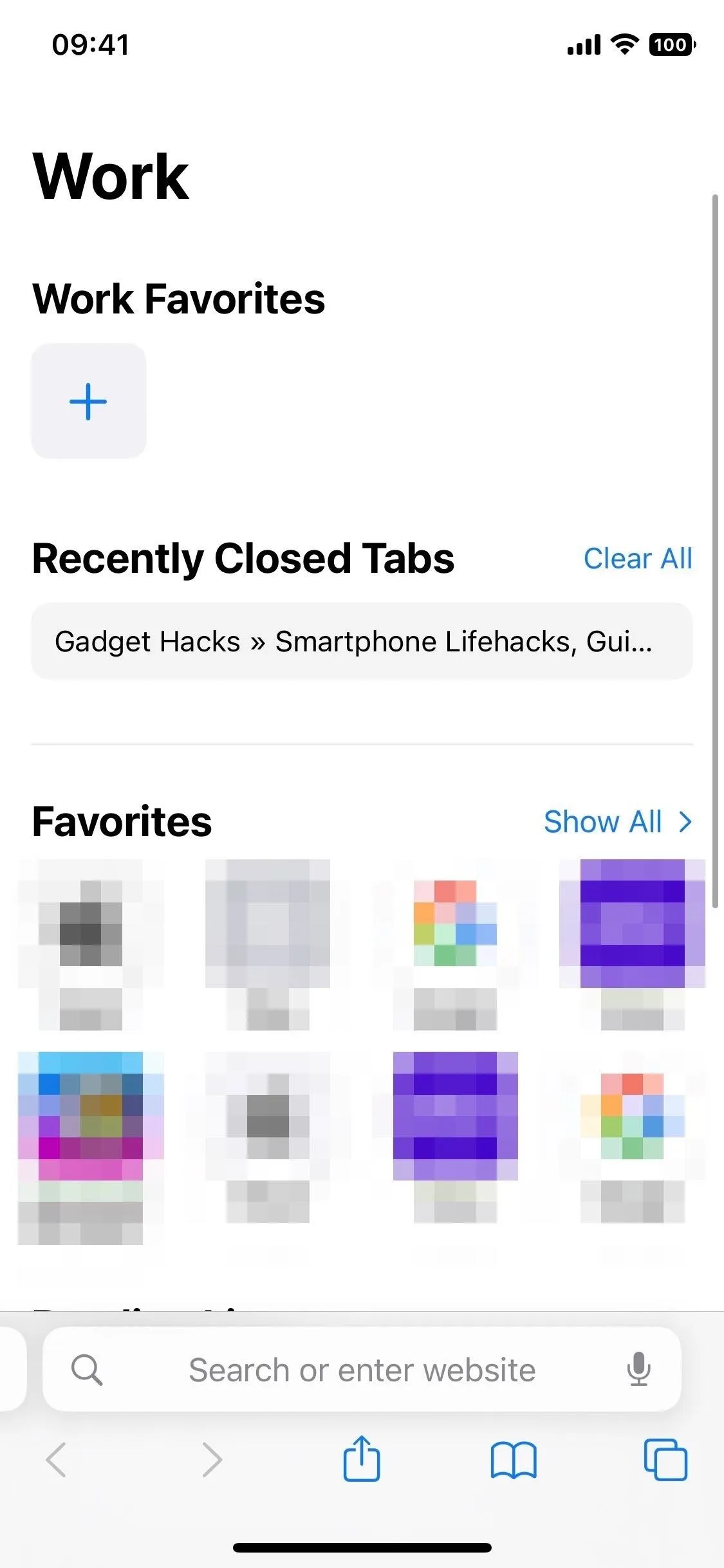
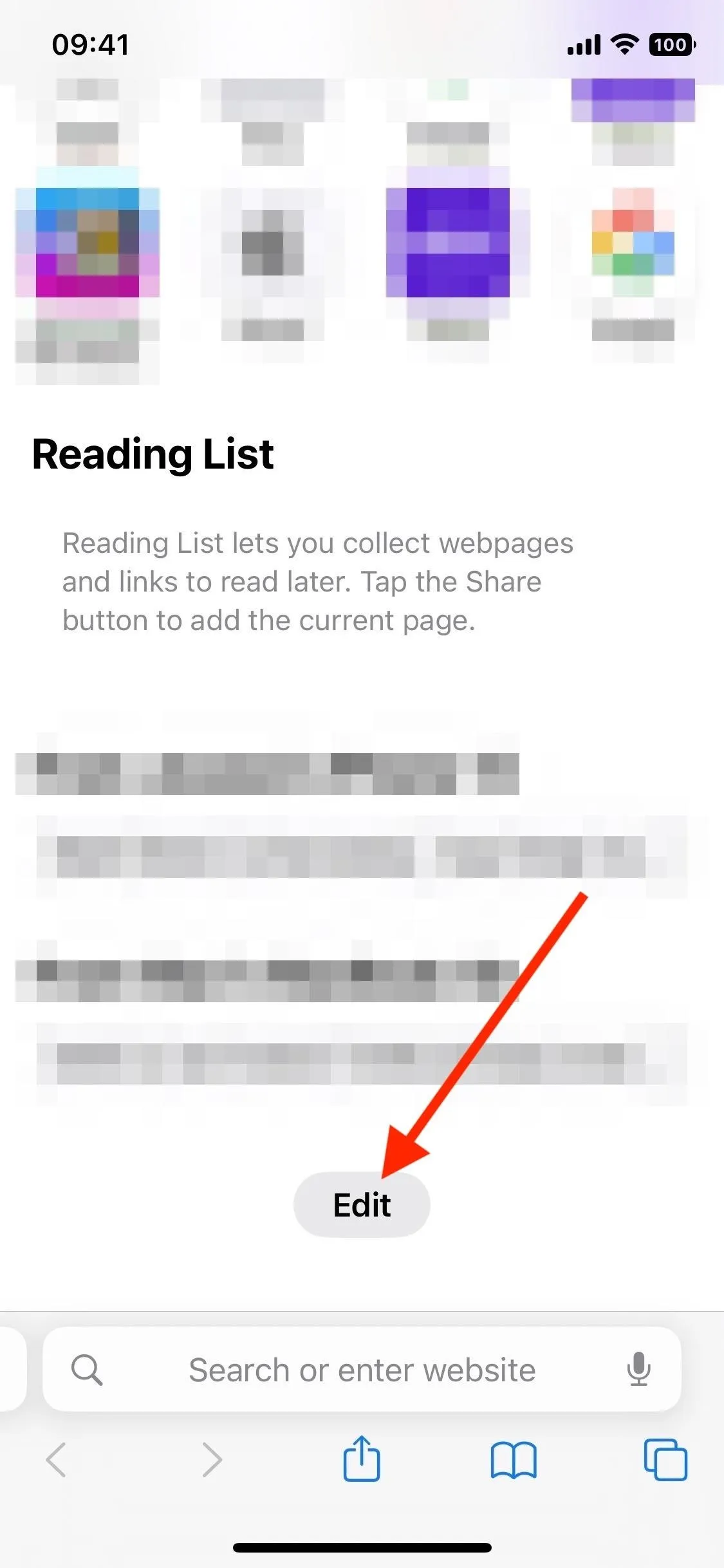




6. Improve Account Security with Passkeys
You may have already heard that Apple, Google, and Microsoft are on track to remove passwords from user accounts completely. It's a very ambitious project, but it starts with small steps, and Apple's Passkeys are a good start. They are designed to protect you against leaks, phishing, and password cracking attacks.
The way they work is simple. You go to a website or an app that supports Passkeys, and instead of entering a password manually during the account creation process, you authenticate with Touch ID or Face ID instead. This will generate unique public and private keys tied to your biometric authentication. The public key is stored on the website's servers, while the private key is stored in your iCloud Keychain.
The private key remains invisible to you, the website, and even Apple, making it extremely difficult to hack into the account. But it will sync to all your other iCloud devices, so you can easily log in from anywhere.
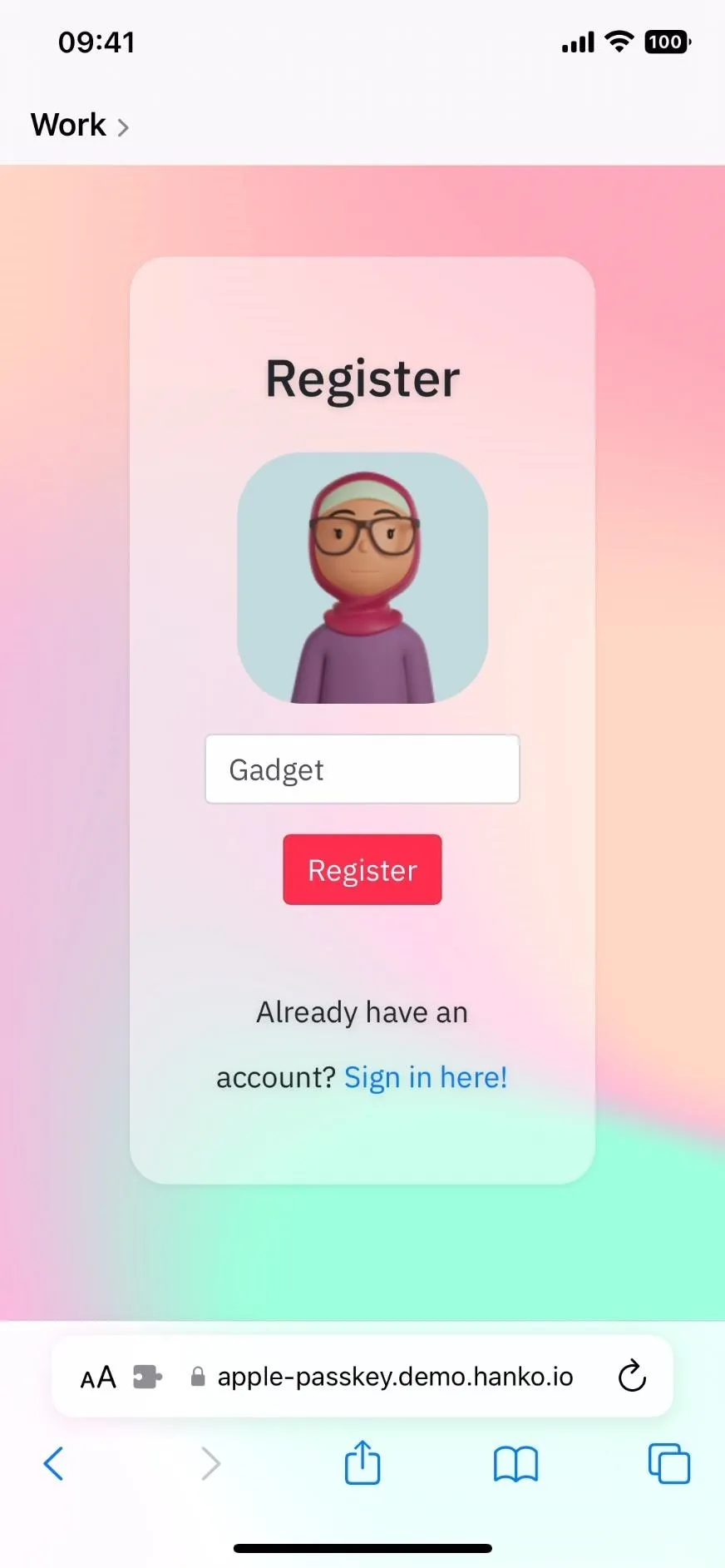

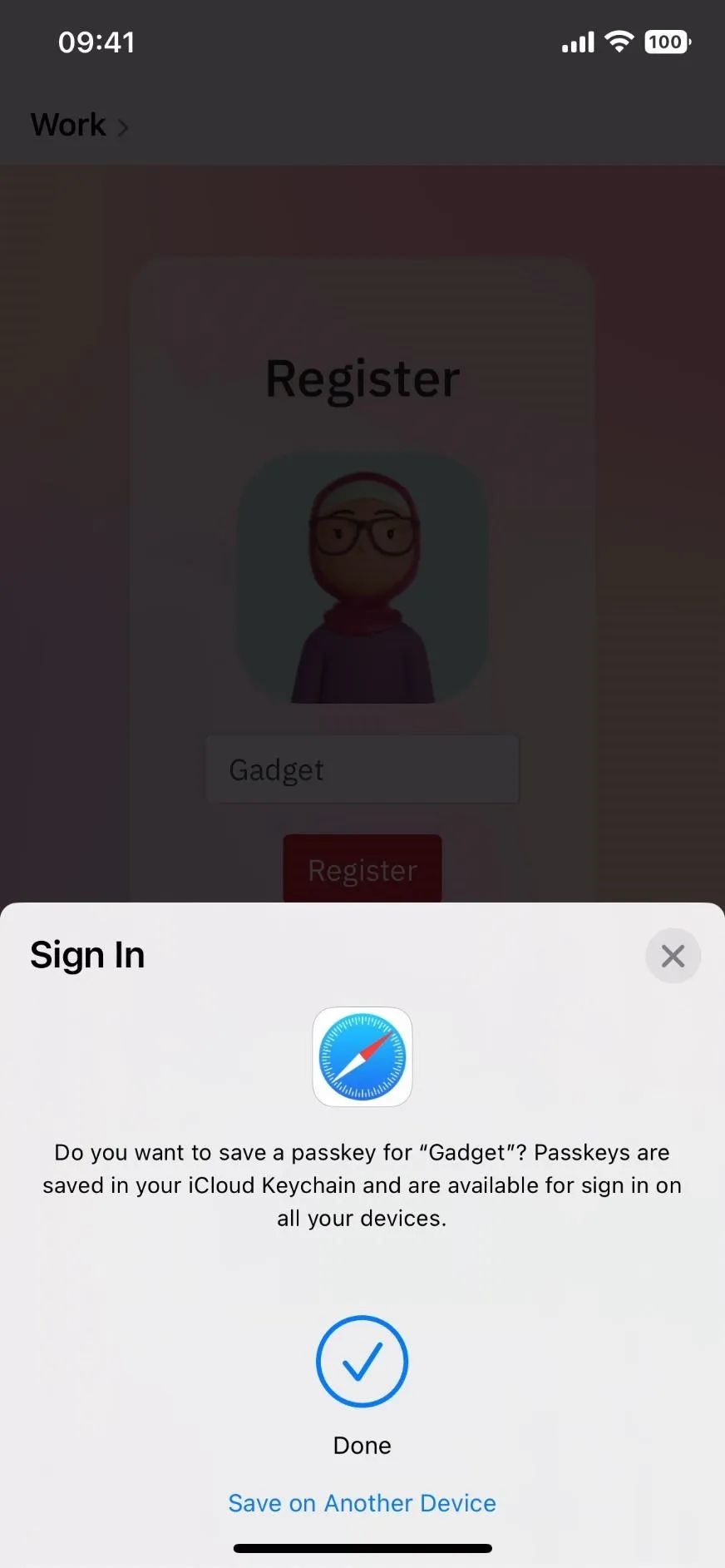



When you sign in to the account again, it will ask for your Passkey and authenticate you with Face ID or Touch ID. The website matches its public key to your private key and grants access.
Since the private key is only on your iCloud-connected devices, it acts as a second factor that essentially limits the need for traditional two-factor authentication. When you sign in on a non-Apple device, you will scan a QR code with your iPhone to log in. You can even share your private key with other users if you share your accounts.
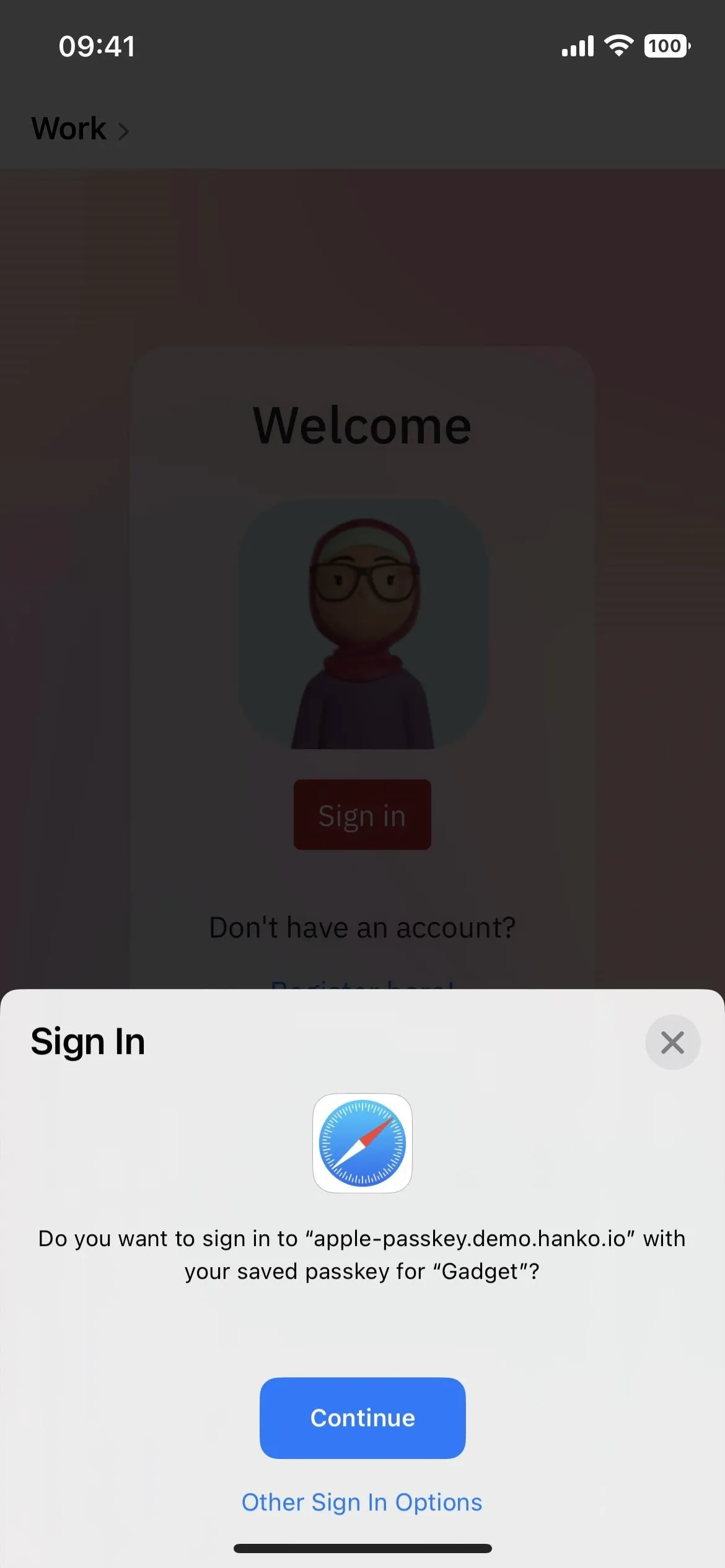
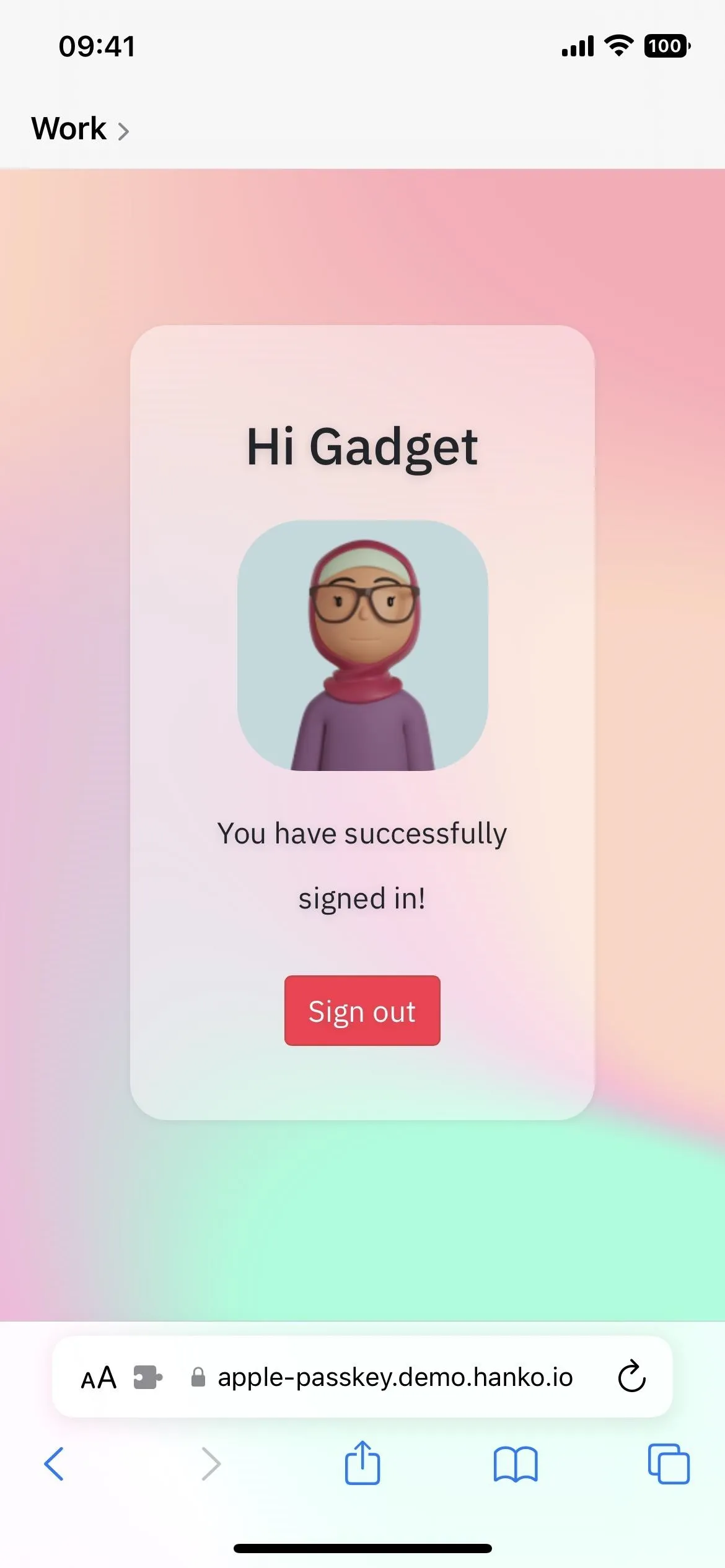




7. Easily Copy Subjects from Images
Along with the Photos app on iOS 16, Safari lets you easily copy the main subject from an online image and remove its background in a single tap. Once you copy the subject, you can paste the cutout, save it, or drop it anywhere on your iPhone.
In Safari, you can isolate and copy subjects from any photo or even an illustration. Long-press the image you want and choose "Copy Subject" from the menu. Go to Messages, any other messaging app, or a photo-editing app and paste the cutout. In Messages, tap inside the text input field and tap the "Paste" button that pops up.






8. Sync Your Extensions Across Devices
The iOS 16 update also makes it easy to sync your Safari extensions across Apple devices. It's not quite as automatic as we'd like, but it's the next best thing. This feature is automatically enabled, and if you want to turn it off, go to Settings –> Safari –> Extensions, then toggle off "Share Across Devices." You can also see installed extensions here.
To actually get the extensions working on your other iCloud-connected devices, you need to have the apps for those extensions installed on those devices. The installation process is convenient since all the apps are listed in one place, so you don't have to hunt for each one. There are a few more things to know about the feature, like what happens when you don't see apps in the download section, so check out our complete guide for details.
- More Info: Safari Now Lets You Sync and Manage All Your Web Extensions Across Your iPhone, iPad, and Mac
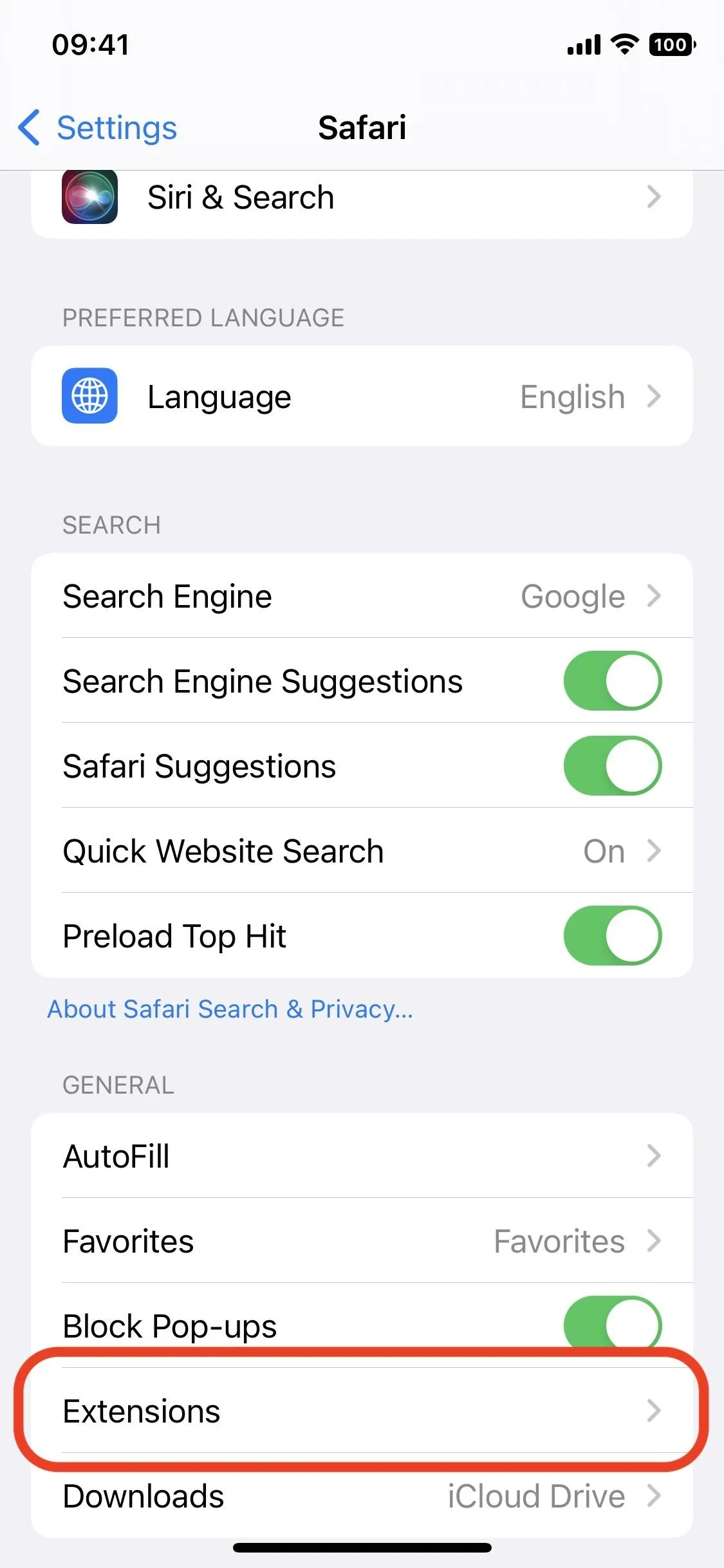
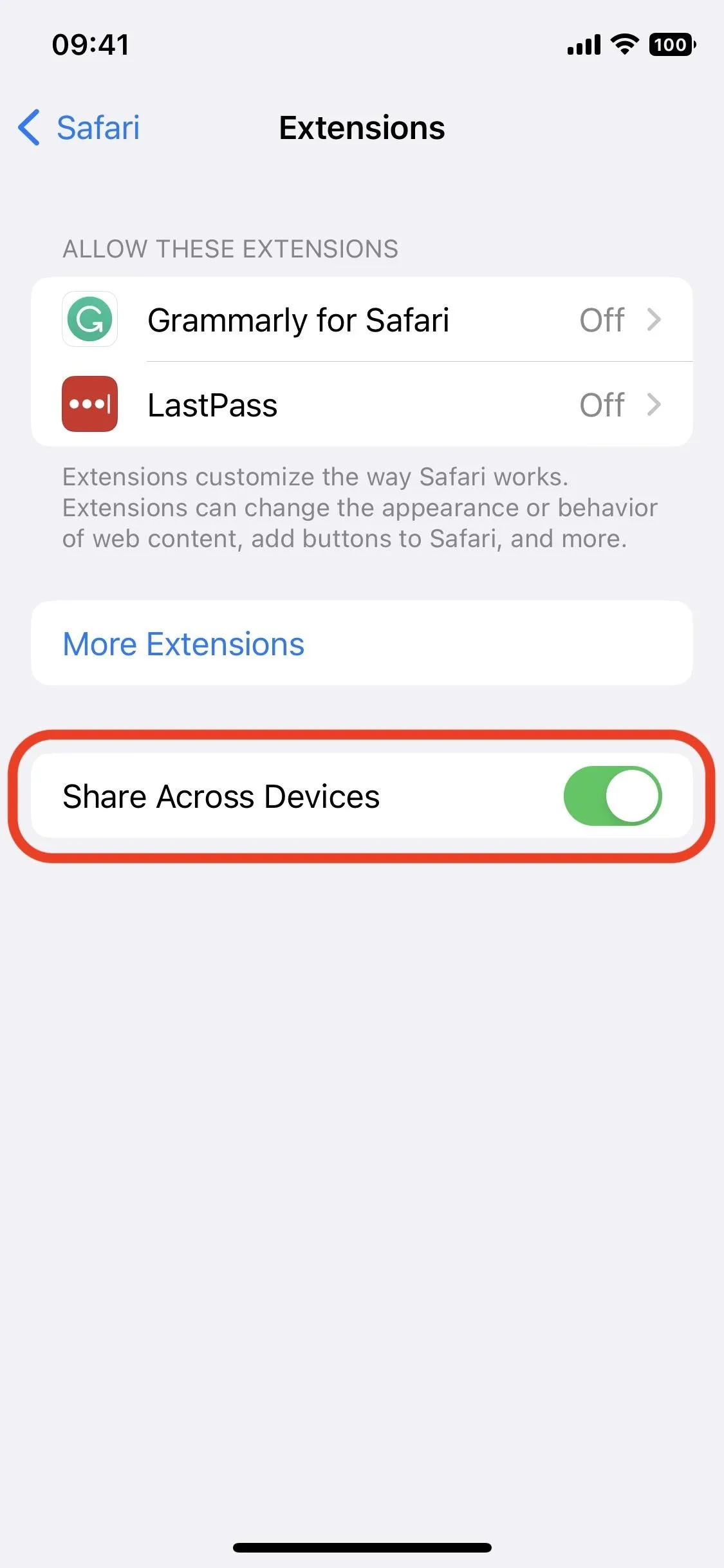


9. Get Push Notifications from Websites
While it's not coming out until a later iOS 16 update in 2023, you'll eventually be able to get push notifications from websites in Safari, similar to how it works in Safari on Mac. You'll be able to choose if you want to receive push notifications or not for each website you visit, and it can even work in other browsers.
10. Sync Website Settings Across Devices
If you go to Settings –> Safari –> Settings for Websites, you'll be able to toggle on or off "Share Across Devices." This is a new feature that lets you sync all of your preferred settings for websites, including Page Zoom, Request Desktop Site, Reader, Content Blockers, Camera, Microphone, and Location. It can be very useful, but it's easy to disable if you don't want it.

11. Edit Suggested Strong Passwords
When creating an account on any website, Safari offers to create a strong password for you. Your iPhone automatically saves it for you to iCloud Keychain. You never have to remember the password since you can automatically put it in when you log in using AutoFill.
However, some websites have password requirements that don't match the strong password Safari generated for you. They may require a special symbol, no special characters, more capital letters, and so on. Apple fixes this issue in iOS 16 by letting you edit the suggested strong password to meet those requirements.
To edit the suggested strong password, tap "Other Options," which used to be "Choose My Own Password." A menu will pop up where you can choose your own password, use "No Special Characters," or "Edit Strong Password." If you choose to make your own password or manually edit the suggested one, you'll be able to do that in the site's password field.
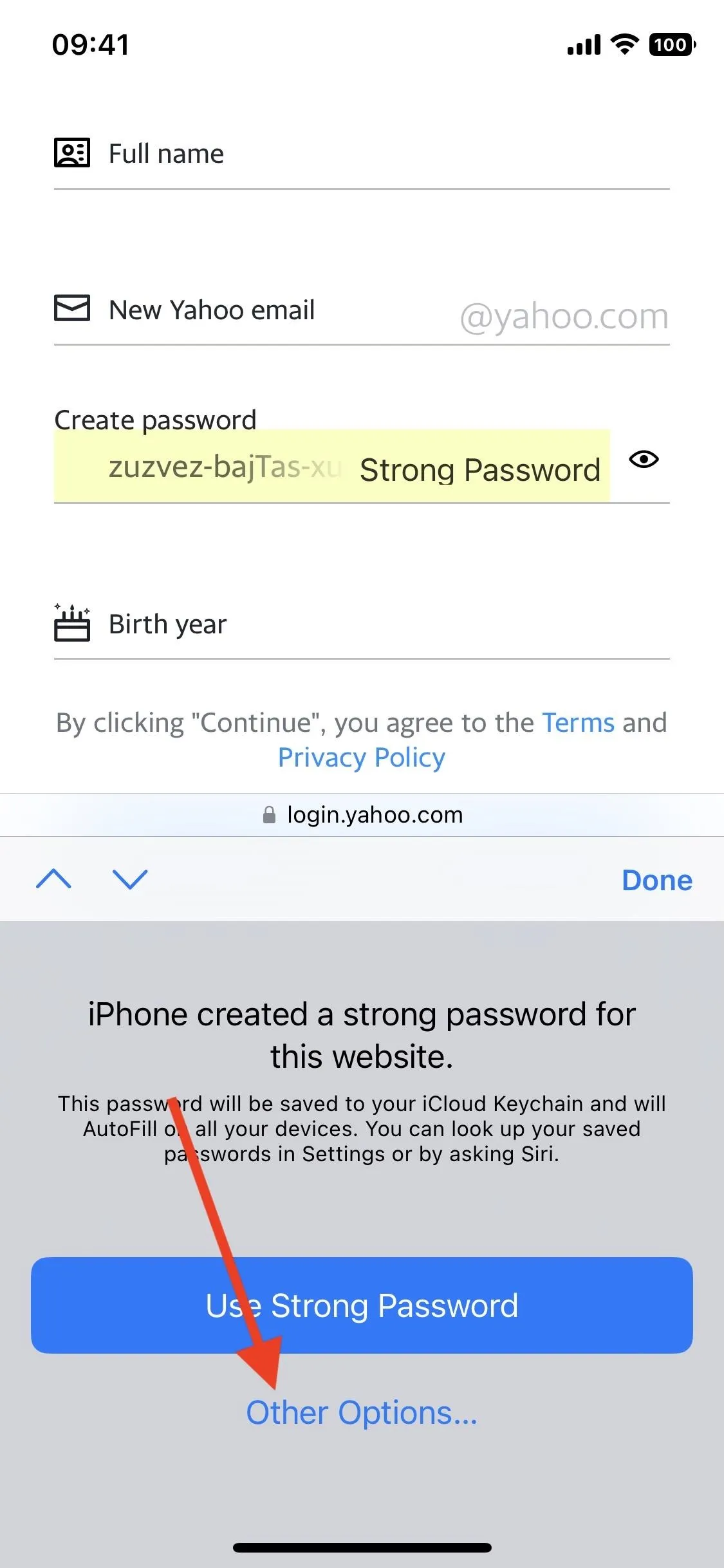
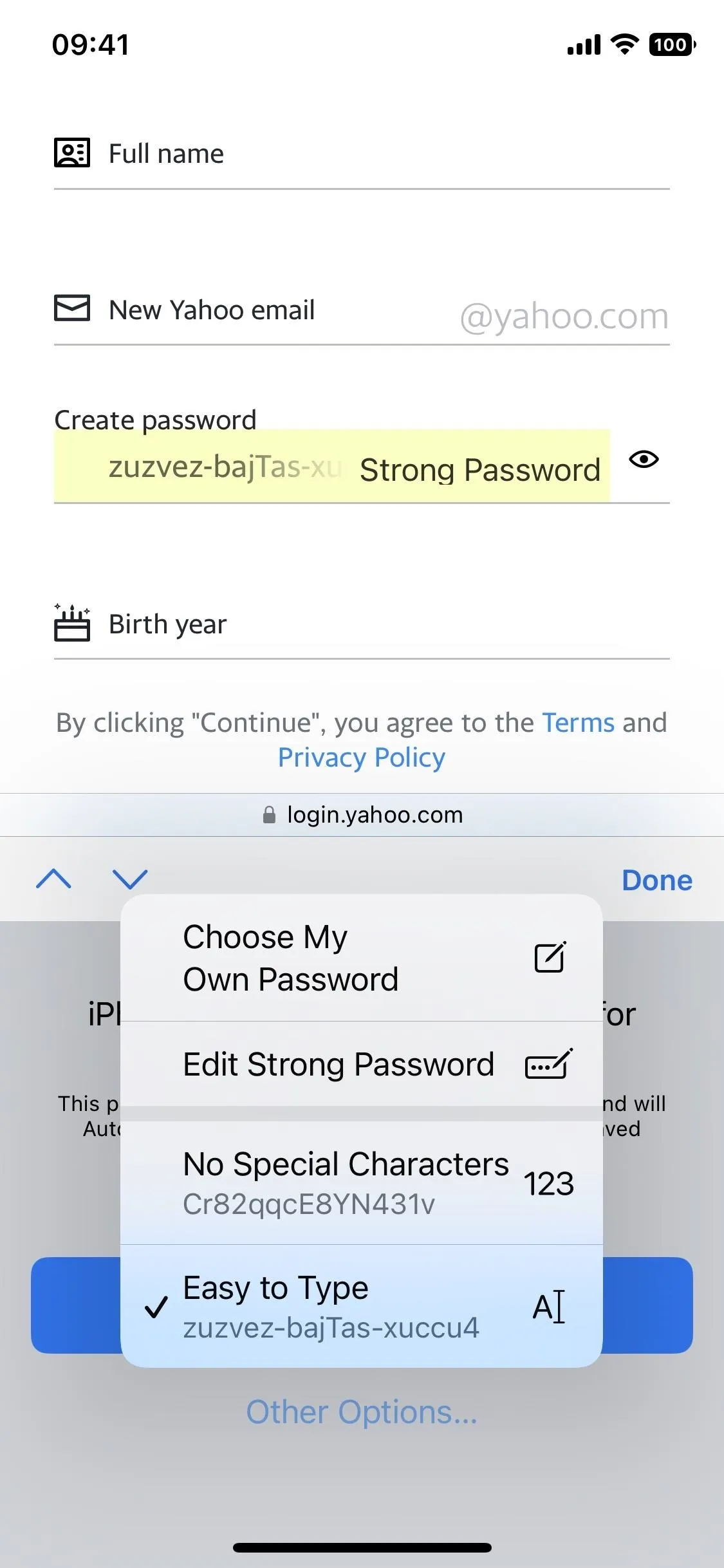


12. Updated Webpage Find Tool
Safari's "Find on Page" tool can be incredibly useful whenever you need to look up something on a webpage. It's located in the share sheet or search bar and works by having you type in the word or phrase you want to find on the page. On iOS 16, Apple made this even easier.
When you long-press a word and highlight the section you want, tap it again to reveal the contextual menu and its latest addition, "Find Selection." It will show you how many times the word/phrase has been used on the page, highlighting it everywhere.
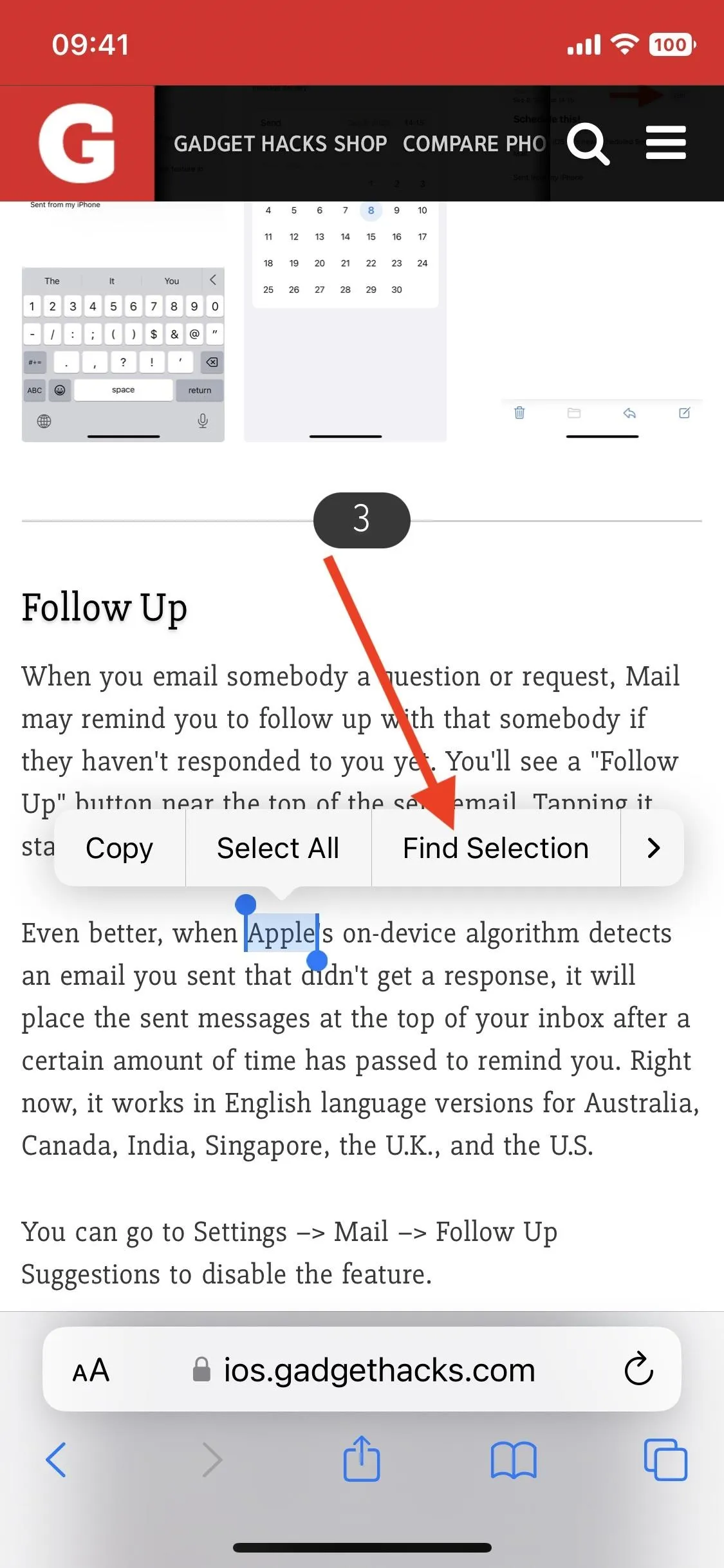



13. Web Page Image Translation
While it was possible to translate text in images from Safari before, it wasn't easy and didn't show the best results. Now, it's much simpler. Long-press on a photo in Safari you want to translate, tap "Show Text," and then hit the "Translate" button. Instead of pulling up an action sheet with the translation, Live Text will simply replace the text on the image.


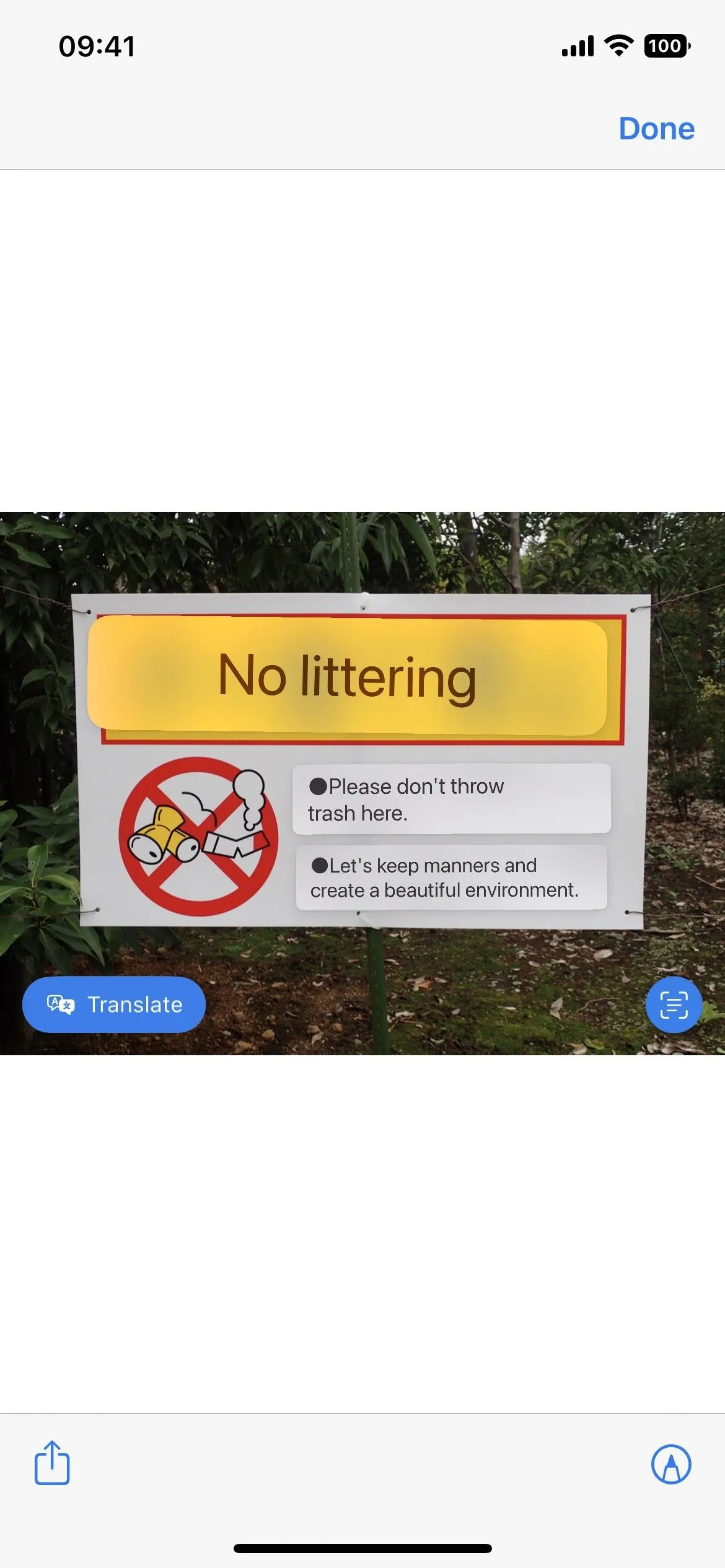



14. More Languages for Safari Webpage Translations
When you need to translate text on a webpage in Safari, you can tap the page settings menu (AA) in the search bar, then "Translate Website." Before, it only worked with Chinese (Simplified), Chinese (Traditional), English, French, German, Italian, Japanese, Portuguese (Brazil), Russian, and Spanish.
In iOS 16, it also now supports Arabic, Dutch, Indonesian, Korean, Polish, Thai, Turkish, and Vietnamese.
15. Live Text in Videos
You can now use Live Text to interact with text seen in paused video frames. That way, you can copy and paste, look up information, translate content, visit URLs, and more. It works in Photos, Quick Look, and other apps, and it also works for videos you play in Safari. You'll see the Live Text button if it detects text in a paused frame. If you're watching a video in portrait orientation, you may have to tap the ellipsis (•••) button to see the "Show Text" option.

16. Show Specific Tab Groups with Focus Filters
Focus mode has been around since last year, aiming to give your iPhone specific permissions based on what you want to do. It's designed for separating work or study time from private time — and it just got updated.
In iOS 16, Focus has a new option called Filters. What does this have to do with Safari? Well, it means you can use it to only display a specific Safari tab group for the focus you're setting up. For example, if you're setting up a work focus, you can make that focus only show your work-related tab group.
Go to Settings –> Focus –> Work (or another focus), tap Add Filter, and tap "Set Tab Group" for Safari. Hit "Choose" to find and select your tab group, then tap "Add" to save your changes. Other apps you can apply Filters to include Calendar, Mail, and Messages.
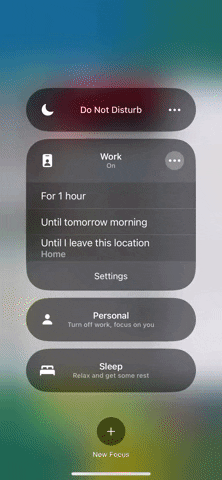



17. New Shortcuts Actions
If you like to create shortcuts and automations, you'll be glad to know that Safari has a lot more actions you can work with in the Shortcuts app. There are new actions for tabs, tab groups, focus filters, and more (seen below). There's also a slight name change for "Show Web Page," now "Show Web View."
- Find Bookmarks
- Open Bookmark
- Open View
- Set Safari Focus Filter
- Find Reading List Items
- Open Reading List Item
- Create Tab Group
- Find Tab Groups
- Open Tab Group
- Close Tab
- Create New Private Tab
- Create New Tab
- Find Tabs
- Open Tab
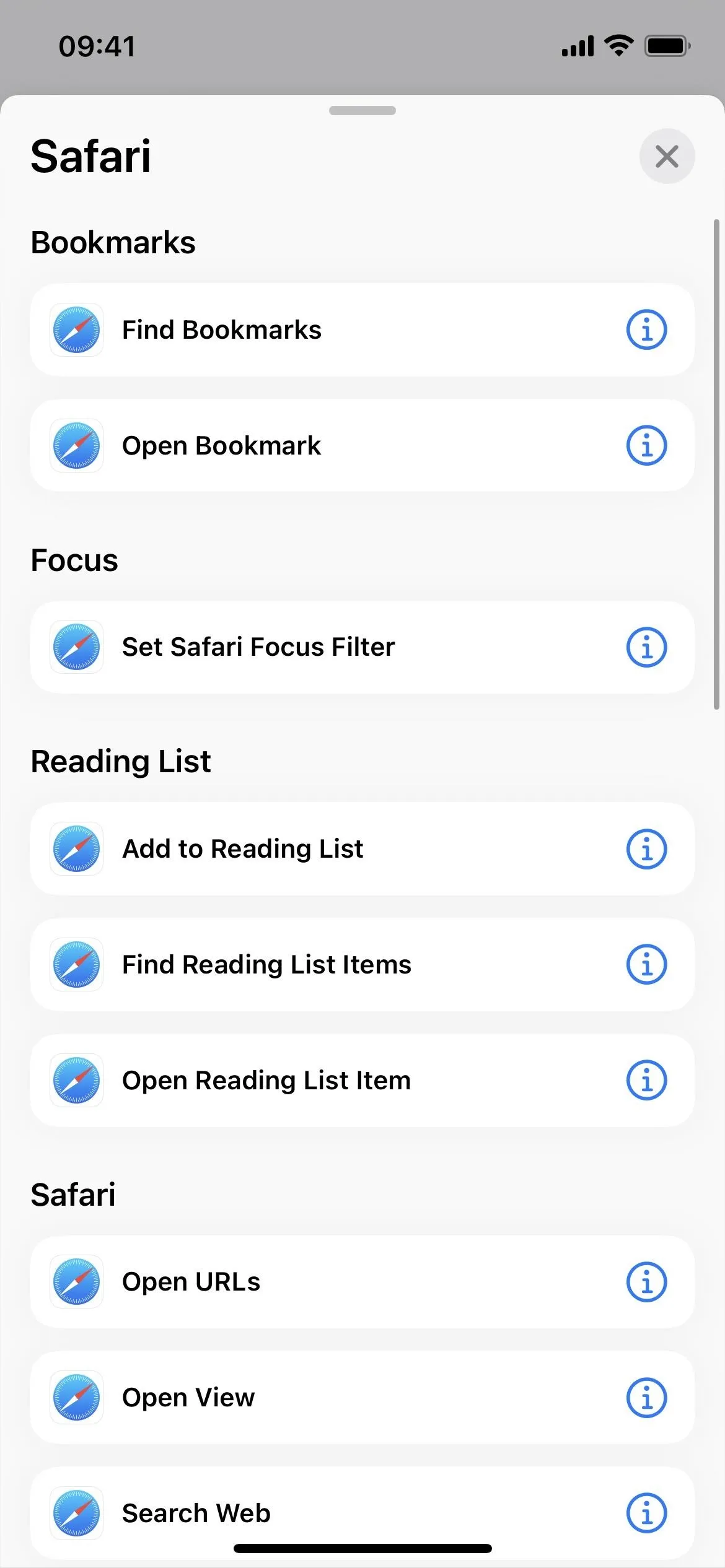





Cover photo, screenshots, and GIFs by Jovana Naumovski/Gadget Hacks

























Comments
Be the first, drop a comment!